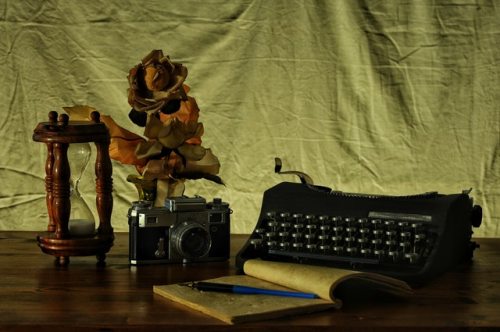
Some years ago, in an article about creating tension in fiction, I quoted agent and writing instructor Donald Maass on the subject:
Without a doubt the most common flaw I see in manuscripts from beginners and midcareer novelists alike is the failure to invest every page of a novel with tension. Low tension equals low interest. High tension equals high interest. The ratio is mathematic, the result positive, so why do so many writers believe they can ignore the equation? (Writing the Breakout Novel, p. 174)
Saying every page needs tension is one thing. Actually pulling it off is another.
I suggest tension is something writers should aim for but not worry about until the editing process. When a first draft is complete, it remains first, not last. Honestly, I’m a little shocked when I hear some self-publishing authors talking about their third edit, as if they have really outdone themselves by going over their manuscript so often.
In truth, a traditionally published author faces multiple editing / proofreading facets of the publishing process after they turn their completed manuscript in to the publisher. Why should self-published works do less? In other words, I advocate multiple edits or revisions, much of which an author can do as part of a self-editing process. Proof reading might be something worth handing over to someone else, because no matter how carefully we look over our work, we can still miss errors we will see as soon as the book is in print.
But back to tension.
How do we know if our book has the requisite “tension on every page”? This may seem simplistic, but I suggest looking for tension. In other words, do an entire edit with one thing in mind: is there tension in this scene?
Note, I said “scene.” I find searching for tension on every page of a manuscript rather hard. It’s hard to stay in the story and ask yourself if there’s tension because, well, you are no longer in the story, so how do you know?
Instead, by looking at scenes instead of pages, evaluating the level of tension is much easier.
What’s a scene? One writing instructor likens novel scenes to scenes in a play. Of course novels have the advantage of also showing a characters internal reactions to the actions and speech taking place on stage. The unit—both the action, dialogue, and internal discourse—together make up a scene.
You can think of a scene ending when the curtain would come down, or when the stage crew comes out to put in new scenery or new props. You can think of a scene as the end of one group of interacting with each other or the end of one day or the end of a particular activity or effort to accomplish something.
And believe me, looking for scenes, as the corollary, writing in scenes, becomes easier the more an author does it.
But here’s the secret in self-editing for tension: after identifying a scene, the author must judge whether or not there was tension.
Tension does not always mean conflict. Certainly when conflict occurs, there should be tension. But there are other ways of creating tension. For example, there can be romantic tension in which a character feels, well, romantic, and wants to move forward but may choose for his own reason (maybe he’s engaged to someone else), to refrain. In this case, the tension is less because of the romance and more because of the struggle he has with his two desires.
Basically tension comes from any type of struggle. Sometimes the struggle is external and those seem easy to identify. But they need to be genuine struggles. Too many superhero movies lack tension because there is no question about the outcome. The superhero will come out on top because, you know, superpower. That’s why superhero authors often create supervillains to confront the heroes—they want to make the struggle credible. They want to open the possibility in the viewer’s mind that the hero might lose.
Fiction needs genuine and credible struggles.
Another type of conflict that creates tension is not against evil but against better. Characters may struggle knowing whether they should do Good Thing A or Good Thing B. An example would be the character who must decide whether to save the drowning boy or to call 9-1-1 for the gunman holding a hostage. Both are needed, but he can’t do both. What should he do? Is there a third option?
Struggles don’t have to be this dramatic, but that have to matter. What a character needs to decide should hold consequences. If the result of Decision A is . . . life goes on, and the result of Decision B is . . . life gets better, there really is no tension when the character struggles to decide. I mean, the results are pretty obvious so the tension is pretty low.
All that to say, writers need to evaluate their own scenes based on whether the tension is high or low.
I’ve created a simple chart in which I write a short scene description, identify what the character wants, and then rate the tension on a scale of 1 to 10, 10 being highest.
Another thing that helps me: if I’m bored, the reader will be too.
And this: if I don’t know where the scene ends and starts, it probably needs work.
In the end, I have a picture of what I believe to be true about the level of tension in my novel, so I can easily see which sections need more work.
It’s not full-proof. We are evaluating our own work, after all, so we can wink at the parts that have low tension without realizing we are. But taking this close look and asking questions about the tension level will most likely help us eliminate the worst, lowest points of tension, and the book is bound to be better for it.


![PowerElementsCharacterDevelopment[1000][1]](https://rebeccaluellamiller.files.wordpress.com/2015/05/powerelementscharacterdevelopment10001.jpg?w=205)






Thanks for a terrific article. I will be linking to it on my blog.
Sounds great! So glad you found it helpful.
Becky
Pingback: Zenobia July — Review & Giveaway – Rosi Hollinbeck